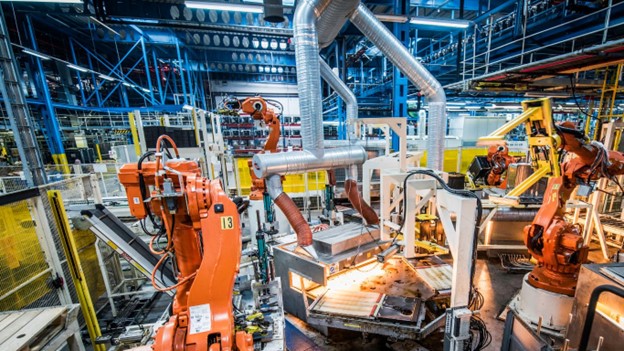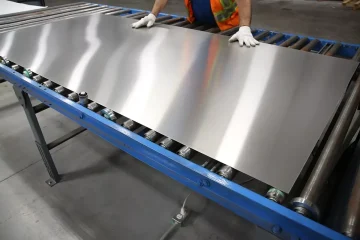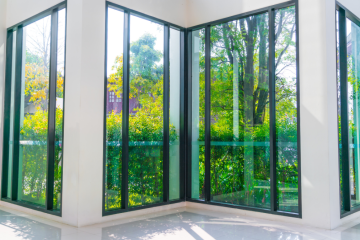Motion control in robotics involves managing the movement of mechanical parts to achieve desired tasks, such as welding, painting, or assembling components. PLCs are at the center of this process, offering the computational power and flexibility to handle complex operations. The 140XBP01600 Modicon Quantum, part of the Modicon Quantum family, is an advanced backplane module that supports multiple I/O modules and enables high-speed communication between components. This makes it an ideal choice for robotic systems requiring precise control of movement.
The Role of PLCs in Motion Control
At the heart of many robotic systems, PLCs play a crucial role in ensuring smooth and accurate movement. Motion control involves coordinating a robot’s mechanical parts in a way that aligns with its desired tasks, such as picking, placing, cutting, or welding. For this to be effective, precise control over the movement is essential, and this is where PLCs excel.
- Position Control: Robotics requires precise positioning of components, especially in industrial applications where tolerances are tight. PLCs can take input from sensors, such as encoders or linear position sensors, and adjust the robot’s movements accordingly.
- Speed Control: Motion control often demands varying speed settings depending on the task at hand. For example, a robot might need to move swiftly when covering long distances and slow down when performing delicate operations. PLCs can regulate speed through algorithms that control the motors.
- Trajectory Planning: In some applications, such as robotic arms in manufacturing, the trajectory or path of movement must be precisely controlled. Advanced PLCs with motion control capabilities allow for trajectory planning, ensuring that the robot follows the exact path required for its task.
- Synchronization of Axes: Many robotic systems involve multiple axes of movement, which need to be coordinated to perform complex operations. For example, a 6-axis robot arm requires all joints to move in sync to reach its target. PLCs with advanced motion control can synchronize these axes efficiently, improving the accuracy and efficiency of the robot.
Advantages of Using PLCs for Motion Control in Robotics
PLCs offer several advantages in motion control for robotics, which makes them an appealing choice for many industrial applications.
1. Flexibility and Scalability
PLCs are highly customizable, making them suitable for a wide range of robotic applications. Engineers can program them to handle anything from simple to complex movements. Additionally, PLC systems are scalable, allowing for the addition of more inputs and outputs as needed, making them ideal for expanding robotic systems over time.
2. Integration with Other Systems
Robotics often operates as part of a larger automated process, involving conveyors, sensors, vision systems, and other equipment. PLCs can easily integrate with these systems via industrial communication protocols like EtherNet/IP, Modbus, or PROFINET. This integration enables seamless operation, ensuring that robots can interact with other components of the production line.
3. Reliability and Robustness
Industrial environments can be harsh, with factors such as vibration, dust, humidity, and temperature fluctuations. PLCs are built to withstand these conditions, making them highly reliable for motion control in robotics. They offer long operational lifetimes with minimal downtime, critical in industries where downtime equates to lost revenue.
4. Real-Time Performance
Robotics often requires real-time responses to inputs, such as changes in the position of an object being manipulated. PLCs excel in real-time control due to their fast processing speeds and ability to handle multiple inputs and outputs simultaneously. This real-time performance ensures that robots can adapt quickly to changes in the environment or process without delays.
Applications of PLCs in Robotic Motion Control
PLCs are used in a variety of applications where robotic motion control is essential. Below are some key industries and tasks where PLC-controlled robotics shine:
1. Automotive Manufacturing
In the automotive industry, robots perform tasks such as welding, painting, assembly, and material handling. PLCs control the precise motion of these robots, ensuring they follow the correct paths, maintain speed, and make adjustments based on real-time feedback from sensors.
2. Material Handling
Robotic systems in warehouses and distribution centers rely on PLCs to control the motion of robotic arms, conveyors, and Automated Guided Vehicles (AGVs). The PLCs ensure that these robots move smoothly and efficiently, reducing the risk of accidents or mishandling materials.
3. Packaging
In packaging, robotic arms are used to pick, place, and sort products into containers. PLCs control the speed, position, and force of the robot to ensure precise placement and avoid damaging the products.
4. CNC Machining
Robotic systems that work in conjunction with CNC machines also rely on PLCs for motion control. Robots need to precisely move materials in and out of the machine, and the PLC ensures that these movements are accurately coordinated with the machine’s operations.
Challenges of Using PLCs for Motion Control
Despite their many advantages, there are challenges associated with using PLCs for motion control in robotics.
1. Complexity of Programming
Advanced motion control requires complex algorithms to manage multiple axes, feedback loops, and trajectories. While PLCs have evolved to handle these tasks, programming them can be challenging, especially for intricate robotic applications.
2. Cost
PLCs capable of advanced motion control, especially when dealing with multiple axes or high-speed applications, can be expensive. This upfront cost can be a barrier for smaller operations or companies new to automation.
3. Latency in Communication
In some cases, communication between the PLC and other system components (e.g., motors, sensors) may introduce latency, particularly if the system involves large numbers of nodes or slower communication protocols. This can affect the real-time performance of the robot.
The Future of PLCs in Robotic Motion Control
The future of Programmable Logic Controllers (PLCs) in robotic motion control is set to transform with ongoing advancements in automation technology. PLCs are evolving to become more robust, incorporating faster processors, enhanced communication protocols, and sophisticated motion control algorithms. These upgrades will enable PLCs to manage increasingly complex robotic systems, making them crucial for industries where precision, reliability, and real-time control are essential.
1. Integration with AI and Machine Learning
As artificial intelligence (AI) and machine learning technologies continue to advance, their integration into robotic systems will significantly impact PLC functionality. PLCs will need to process large volumes of data for intelligent motion control. This integration could lead to real-time decision-making and adaptive control systems that adjust based on sensor feedback and environmental changes. For instance, PLCs like the 140CPS51100 Modicon Quantum will be instrumental in processing and acting on data to optimize robotic performance.
2. Edge Computing and IoT
The rise of edge computing and the Internet of Things (IoT) will further enhance the capabilities of PLCs in robotic motion control. Edge computing enables processing data locally, reducing latency and increasing the responsiveness of robotic systems. IoT connectivity will allow PLCs to communicate seamlessly with other devices and systems in real-time. This will facilitate more efficient and autonomous robotic systems capable of self-monitoring and maintenance. Advanced PLCs such as the 140XBP01600 Modicon Quantum, with their robust communication capabilities, will be central to this evolution.
Conclusion
PLCs, particularly advanced models like the 140XBP01600 Modicon Quantum and the 140CPS51100 Modicon Quantum, are pivotal in the future of motion control for robotics. They provide precise control over robotic movements, ensuring accuracy, speed, and synchronization across diverse industrial applications. Whether in automotive manufacturing, material handling, or other sectors, these advanced PLCs enhance robotic systems, making them more efficient, reliable, and adaptable to evolving production needs. As technology progresses, PLCs will continue to play a critical role in shaping the capabilities and performance of robotic motion control systems.




